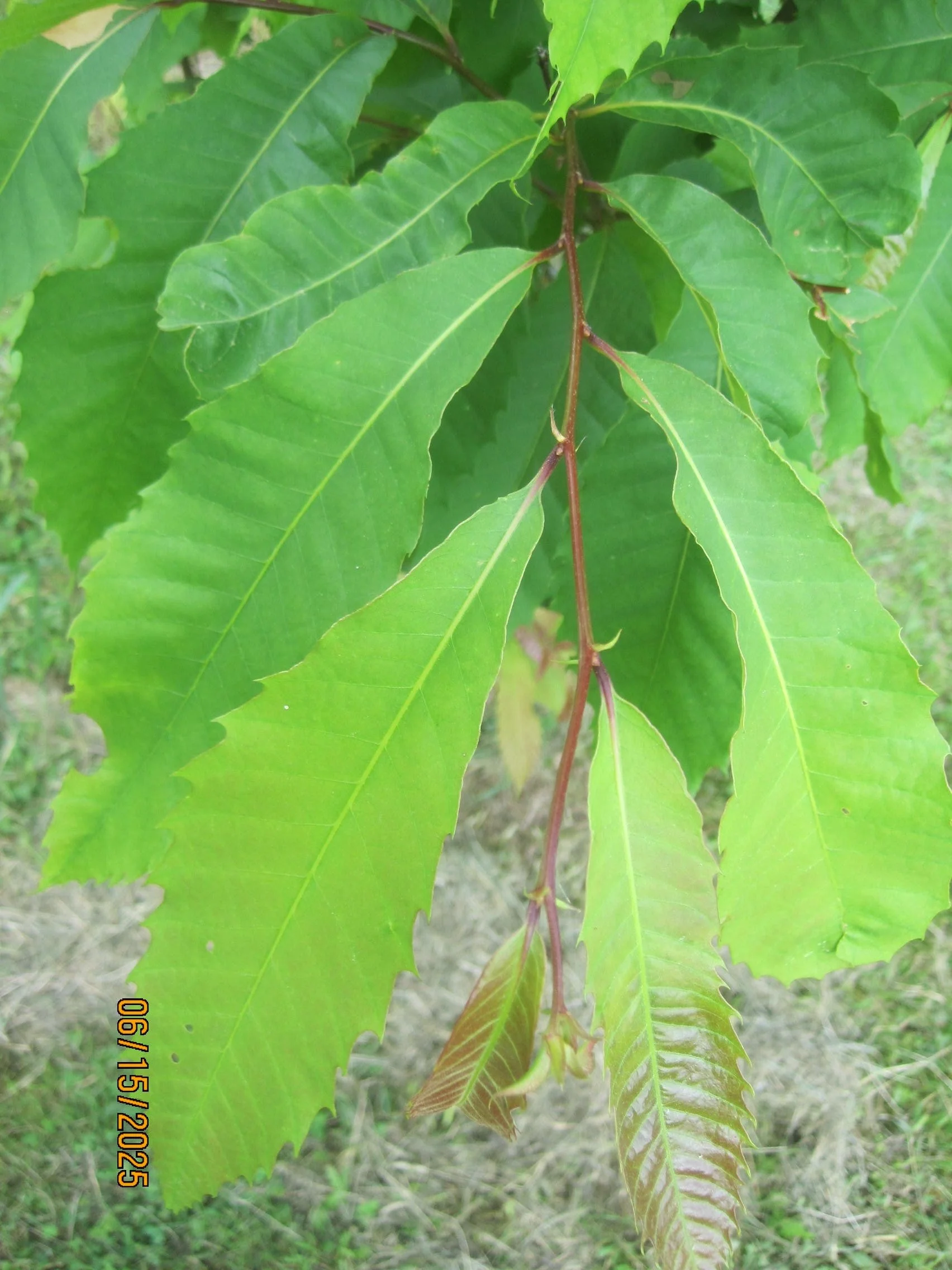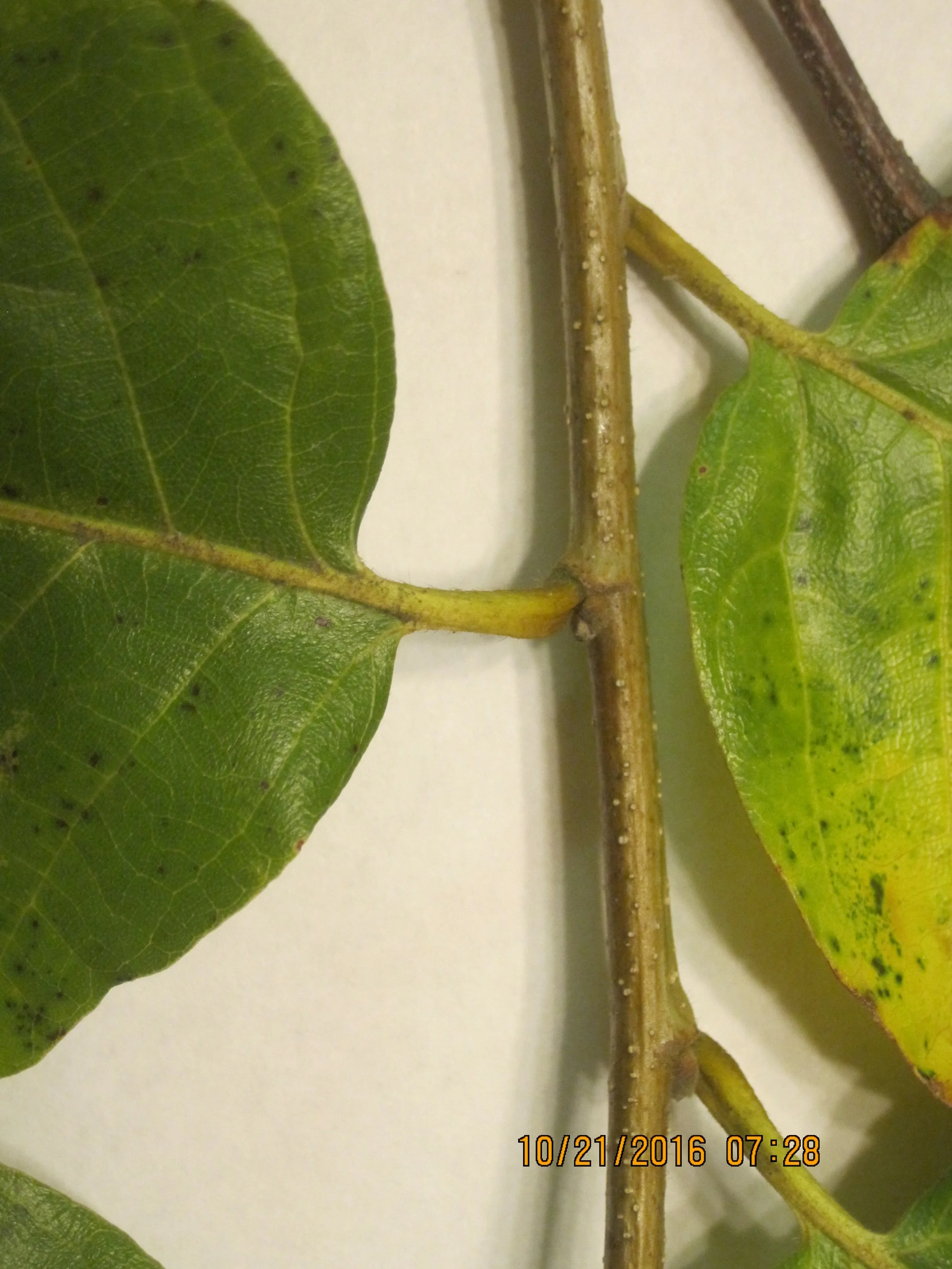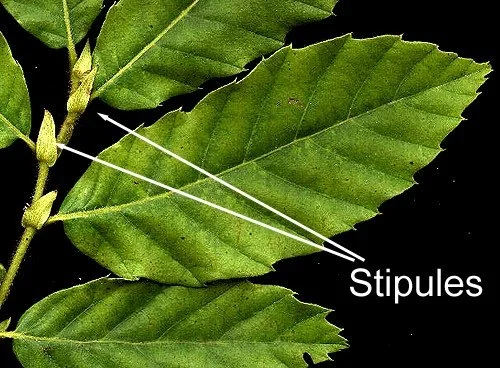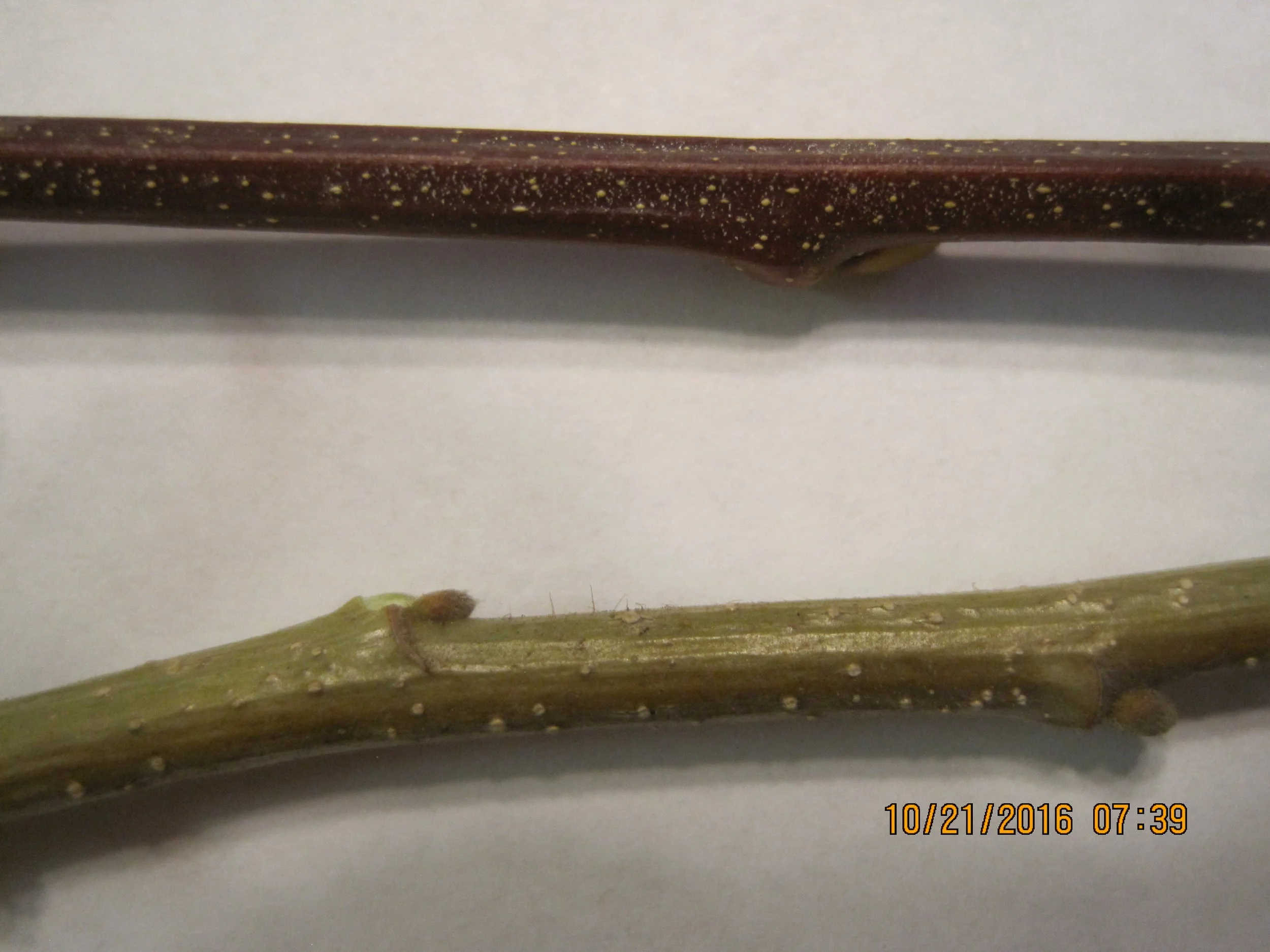
Chestnut Identification
The majority of trees reported to us are American or Chinese. Occasionally we see Japanese or European chestnuts. Sometimes we also see horse chestnuts, which are not true chestnuts. Therefore, this guide primarily focuses on the differences between American and Chinese chestnuts. If a tree is growing near a current or former house, there is a good chance it is not American. If you are unable to identify your tree, please reach out to us, and we will be happy to help. If you are interested in seeing chestnuts in your area, you can visit iNaturalist. iNaturalist is also a great way for you to get other people’s input for identifying a tree you find.
Leaves
American chestnut leaf features:
Thin (papery)
Mostly hairless
Serrations are large and fish hook shaped
Tapered on both ends
Stipules are absent or small if present
Chinese chestnut leaf features:
Thick (leathery)
Base and tip are blunter
Glossy on top
Hairy on the bottom and along the edges
Serrations are shallower
Stipules are large
Japanese trees are similar to Chinese trees, having glossy, hairy leaves.
Stems
American chestnut stems are hairless and brown, whereas Chinese chestnut stems are green and hairy. The stem on top is an American chestnut, and the stem on the bottom is a Chinese chestnut.
Nuts
The main difference between nuts is that American chestnuts are small, and Chinese, Japanese, and European chestnuts tend to be larger.
American chestnuts
American chestnuts, fertile ones on the left, and infertile ones on the right
Chinese chestnuts on the left, American chestnuts on the right
Chinese chestnut bur on the left, American chestnut bur on the right
Chinese chestnuts
Horse Chestnut
Horse chestnuts are not true chestnuts, but are often misidentified as chestnuts. They have palmately compound leaves, and the burs are not nearly as spiny as true chestnuts.















